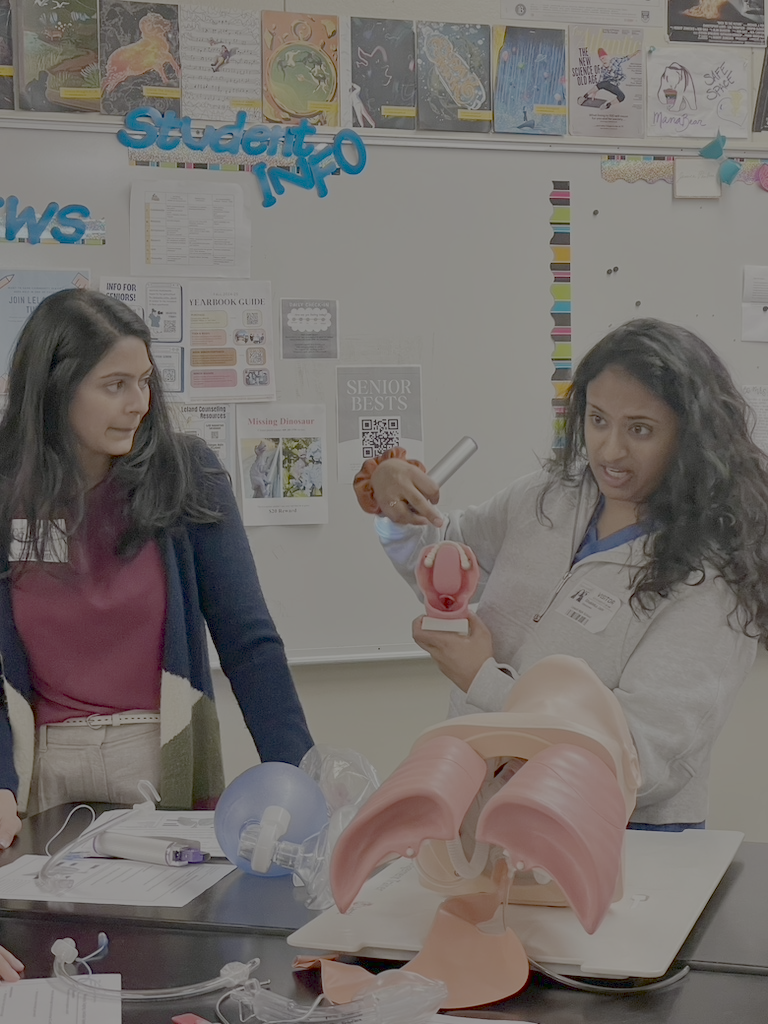By Shubhika Jain, MD

Project Lead the Way (PLTW) is a national non-profit that is focused on increasing the number of students going into STEM fields. It provides a curriculum that is informed by current industry and knowledge demands while focusing on computer science, engineering, and biomedical science. It has significantly grown over the years and is now taught in schools across the nation. My small, rural southern Illinois high school was one of the first in the state to adopt PLTW. I remember being a freshman in high school when my teacher told us about everything we would be learning that year. I was filled with curiosity and excitement as I realized that medicine wasn’t a far-off dream but a tangible career path. This program was one of my first exposures to the field of medicine and as I progressed through the four-year PLTW biomedical sciences curriculum, it fueled my desire to pursue a career in healthcare. The experience was transformative as I acquired knowledge, skills, and mentors to begin my journey on the path to becoming a physician. Now, as I enter my last year of anesthesiology residency at Stanford, it’s nostalgic seeing that dream become a reality.
As a resident, I have had the privilege to engage with students enrolled in PLTW curriculum at three Bay Area high schools: Palo Alto High School, Willow Glen High School, and Leland High School. I collaborate with faculty and co-residents to expand classroom teaching through anesthesiology focused learning experiences. Our strong collaborative partners – Stanford’s Department of Anesthesiology, California Society of Anesthesiologists, the PLTW national curriculum, our three high schools, and local legislators – play a defining role in helping us achieve our goals.
Stanford anesthesia faculty and residents visit each of the three sites in the fall to introduce students to the field of anesthesiology through case-based learning. As students rotate through workshops, we review a plethora of topics such as airway anatomy and lung physiology. We also have pediatric and adult airway manikins where students can learn practical, hands-on skills that include bag masking and intubation. Then, in the spring we host the students at the Palo Alto VA (Veterans Affair) Simulation Center to continue building on the knowledge and skills acquired in the fall. In small groups, they learn more about the management of airway, breathing, and circulation. The workshops in the spring include expanding on intubation skills, heart anatomy using an echocardiogram simulator, ultrasound-guided vascular access and nerve blocks, cardiopulmonary resuscitation, and using automated external defibrillators.
During my first volunteer experience, I still vividly remember the moment when students’ faces lit up as we began studying these topics. Suddenly, medicine wasn’t as distant as they once thought. That spark of realization reminded me of the journey I began as a PLTW student myself. Seeing their curiosity blossom into excitement was deeply fulfilling and allowed me to recognize the power of mentorship. It is not only about providing knowledge, but about offering representation. As a former student in their shoes, I was able to show these students that their dreams are within reach. In fact, data collected via a survey that was filled out by our participants was exceptionally positive. 100% of respondents would recommend these workshops to a friend, 100% were able to name three new things they learned during the workshops, and 50% expressed interest in learning more about the path to medicine. This cycle of mentorship, being inspired by those who came before me and paying it forward to those who follow, has been a defining part of my residency training.
The outreach efforts of PLTW have truly been groundbreaking. A study by professors in Iowa found that PLTW increased the odds of a student attending a 2-year college by 64% and increased the odds that they attend a 4-year college or university by 52%.2 Another study in Texas found that PLTW participation is linked to higher scores on math exams and a higher percentage of students meeting the college-ready criterion.3 This is more important now than ever. According to the AAMC (Association of American Medical Colleges), the United States will face a physician shortage of up to 86,000 physicians by 2036.1 We have a dire need for healthcare workers and outreach efforts like PLTW can help address this shortage. Moreover, it has such a strong impact on current physicians as well. It gives us the opportunity to teach and engage with the youth while empowering students to pursue careers in healthcare. PLTW provided me with strong hands-on learning and invaluable critical thinking skills that have shaped the physician I am today. It is such a privilege to work with my teachers and colleagues to mentor and inspire the next generation of healthcare professions, just as I was inspired during my time in PLTW.
References:
- New AAMC report shows continuing projected physician shortage. AAMC. (2024, March 21).https://www.aamc.org/news/press-releases/new-aamc-report-shows-continuing-projected-physician-shortage#:~:text=According%20to%20new%20projections%20published,to%2086%2C000%20physicians%20by%202036.
- Rethwisch, D. G., Chapman, M., Schenk, T., Laanan, F. S., & Starobin, S. (2013). A Study of the Impact of a National Project Based Learning Curriculum (PLTW) on Student Continuation to Postsecondary Institutions. https://www.researchgate.net/publication/344533275_A_Study_of_the_Impact_of_a_National_Project_Based_Learning_Curriculum_PLTW_on_Student_Continuation_to_Postsecondary_Institutions
- Van Overschelde, J. P. (2013). Project Lead the Way Students More Prepared for Higher Education. American Journal of Engineering Education (AJEE), 4(1), 1–12. https://doi.org/10.19030/ajee.v4i1.7854
